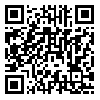BibTeX | RIS | EndNote | Medlars | ProCite | Reference Manager | RefWorks
Send citation to:
URL: http://bcn.iums.ac.ir/article-1-529-en.html

 , Soraya Mehrabi2
, Soraya Mehrabi2 
 , Fariba Karimzadeh1
, Fariba Karimzadeh1 
 , Mohammad-Taghi Joghataei1
, Mohammad-Taghi Joghataei1 

 , Mojtaba Khaksarian3
, Mojtaba Khaksarian3 
 , Mahmoud Reza Hadjighassem4
, Mahmoud Reza Hadjighassem4 
 , Majid Katebi5
, Majid Katebi5 
 , Mansooreh Soleimani *1
, Mansooreh Soleimani *1 

2- Shefa Neuroscience Center, Khatam-Alanbia Hospital, Tehran, Iran.
3- Department of Physiology, School of Medicine, Lorestan University of Medical Sciences, Khorramabad, Iran.
4- Department of Neuroscience, School of Advanced Technologies in Medicine, Tehran University of Medical Sciences, Tehran, Iran.
5- Department of Anatomy, School of Medicine, Hormozgan University of Medical Sciences, Bandar Abbas, Iran.
Introduction: Transforming Growth Factor-Beta 1 (TGF-β1) is a pleiotropic cytokine with potent anti-inflammatory property, which has been considered as an essential risk factor in the inflammatory process of Ischemic Stroke (IS), by involving in the pathophysiological progression of hypertension, atherosclerosis, and lipid metabolisms. -509C/T TGF-β1 gene polymorphism has been found to be associated with the risk of IS. The aim of this meta-analysis was to provide a relatively comprehensive account of the relation between -509C/T gene polymorphisms of TGF-β1 and susceptibility to IS.
Methods: Male Wistar rats were divided into sham (receiving phosphate buffered saline within dorsal hippocampus), pilocarpine (epileptic model of TLE), single injection BDNF (epileptic rats which received single high dose of BDBF within dorsal hippocampus), and multiple injections BDNF (epileptic rats which received BDNF in days 10, 11, 12, and 13 after induction of TLE) groups. Their electrocorticogram was recorded and amplitude, frequency, and duration of spikes were evaluated.
Results: Amplitude and frequency of epileptiform burst discharges were significantly decreased in animals treated with BDNF compared to pilocarpine group.
Conclusion: Our findings suggested that BDNF may modulate the epileptic activity in the animal model of TLE. In addition, it may have therapeutic effect for epilepsy. More studies are
necessary to clarify the exact mechanisms of BDNF effects.
Received: 2015/03/28 | Accepted: 2015/04/1 | Published: 2015/07/18
| Rights and permissions | |
 |
This work is licensed under a Creative Commons Attribution-NonCommercial 4.0 International License. |





